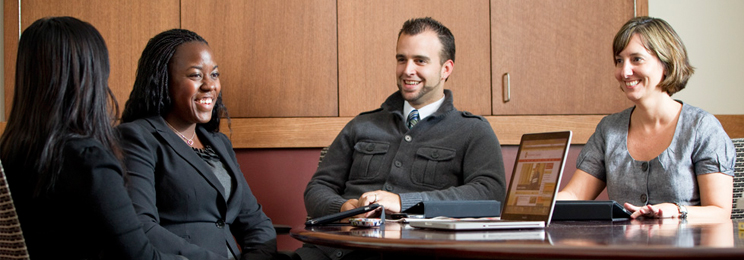
By Art LaMan III, PMP.
Art LaMan III, PMP, is a faculty member in Northeastern University’s Master of Science in Project Management program. He is an accomplished leader with more than 20 years of experience in operations management, business technology development, and business strategy development across diverse industries.
I emphasize to the students in my Project Management master’s program classes that—no matter what they’re doing now—at some point in their careers, they’re going to be working with people from many different places and backgrounds, and they have to be able to communicate effectively while networking.
That’s true for students in any graduate program, and using good networking practices can help them build connections that last throughout their working lives.
Here are my best tips for improving your networking skills, both online and in-person.
Tips for Online Networking
1. Whenever you make an online overture on a platform like LinkedIn, don’t just hit the “send request” button—provide some context to the person you’re contacting.
Even if it’s someone you were taught by, took a class with, or worked with, if time has passed, they might need a refresher on how they know you. Include a short message re-introducing yourself.
2. When using email to contact someone you’d like to add to your professional network, use a subject heading that makes it clear what your message is about.
(For example: “Informational Interview Request.”)
3. Have a good, professional-quality headshot.
You can use this in your LinkedIn profile, on your website, and anywhere else you have an online presence for professional use.
4. Always keep your professional and personal/social/family lives separate online.
It’s a good idea to keep all of your professional contacts on LinkedIn, and all of your personal contacts on Facebook. You can – and should – still be a human being with normal human interactions in your business life, but your communication should be at a different level. Use a different tone when it comes to your professional network.
5. Begin all professional emails with a short pleasantry.
(For example: “Good evening, Mr. Jones. I hope this email finds you well.”)
6. Make your “ask” front and center.
Within the first couple of lines of your email, clearly spell out what it is you’re requesting.
Tips for In-Person Networking
1. Remember that—whether you’re in class, at your co-op placement, or in the office elevator on your way to lunch—you’re always “auditioning.”
Any classmate, faculty member, co-worker, or incidental acquaintance may turn out to be a link to a job opportunity that you never knew existed. Conduct yourself in a professional manner, and that’s how you’ll be remembered.
2. Don’t hound members of your network for a job. When you have a professional networking opportunity, understand that the goal shouldn’t be to give your business cards or resume to people and expect them to give you a job. Instead, the aim should be to get the contact information of people you want to connect with, so you can proactively engage them and build your network.
3. Expand your network in stages. Take the time to expand your network beyond your immediate circle of friends and acquaintances. There is important information to obtain through the network – and that information likely exists beyond your local contacts. Every event you attend is another opportunity to meet someone new – and to add them to your network.
4. To paraphrase JFK’s famous remark: “Ask not what your network can do for you; ask what you can do for your network.”
It’s important to nourish your network by taking part in activities and offering to help others. That helps to gets you noticed and remembered, and it benefits everyone in your professional circle in ways that will come back to you many times over.
What have you found to be the “do”s and “don’t”s of networking?